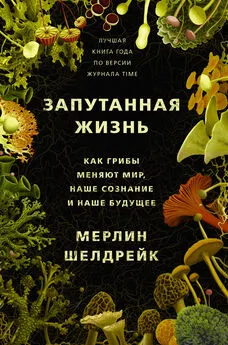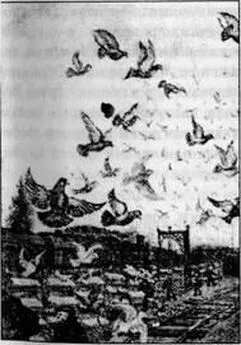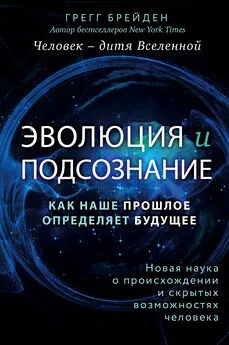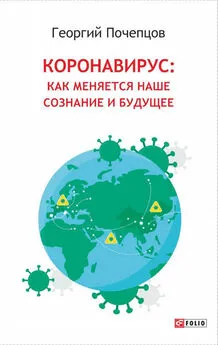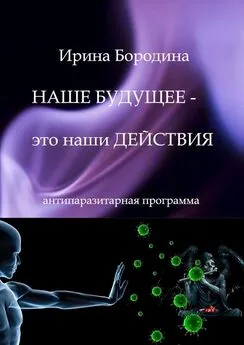Мерлин Шелдрейк - Запутанная жизнь. Как грибы меняют мир, наше сознание и наше будущее
- Название:Запутанная жизнь. Как грибы меняют мир, наше сознание и наше будущее
- Автор:
- Жанр:
- Издательство:Литагент АСТ
- Год:2021
- Город:Москва
- ISBN:978-5-17-122572-8
- Рейтинг:
- Избранное:Добавить в избранное
-
Отзывы:
-
Ваша оценка:
Мерлин Шелдрейк - Запутанная жизнь. Как грибы меняют мир, наше сознание и наше будущее краткое содержание
Талантливый молодой биолог Мерлин Шелдрейк переворачивает мир с ног на голову: он приглашает читателя взглянуть на него с позиции дрожжей, псилоцибиновых грибов, грибов-паразитов и паутины мицелия, которая простирается на многие километры под поверхностью земли (что делает грибы самыми большими живыми организмами на планете). Открывающаяся грибная сущность заставляет пересмотреть наши взгляды на индивидуальность и разум, ведь грибы, как выясняется, – повелители метаболизма, создатели почв и ключевые игроки во множестве естественных процессов. Они способны изменять наше сознание, врачевать тела и даже обратить нависшую над нами экологическую катастрофу. Эти организмы переворачивают наше понимание самой жизни на Земле.
В формате PDF A4 сохранен издательский макет.
Запутанная жизнь. Как грибы меняют мир, наше сознание и наше будущее - читать онлайн бесплатно ознакомительный отрывок
Интервал:
Закладка:
Sapp J. 2016. The Symbiotic Self. Evolutionary Biology 43: 596–603.
Sapsford SJ, Paap T, Hardy GE, Burgess TI. 2017. The “chicken or the egg”: which comes first, forest tree decline or loss of mycorrhizae? Plant Ecology 218: 1093–106.
Sarrafchi A, Odhammer AM, Salazar L, Laska M. 2013. Olfactory sensitivity for six predator odorants in cd-1 mice, human subjects, and spider monkeys. PLOS ONE 8: e80621.
Saupe S. 2000. Molecular genetics of heterokaryon incompatibility in filamentous ascomycetes. Microbiology and Molecular Biology Reviews 64: 489–502.
Scharf C. 2016. How the Cold War Created Astrobiology. Nautilus : nautil.us/issue/32/space/how-the-cold-war-created-astrobiology-rp [accessed October 29, 2019].
Scharlemann JP, Tanner EV, Hiederer R, Kapos V. 2014. Global soil carbon: understanding and managing the largest terrestrial carbon pool. Carbon Management 5: 81–91.
Schenkel D, Maciá-Vicente JG, Bissell A, Splivallo R. 2018. Fungi indirectly affect plant root architecture by modulating soil volatile organic compounds. Frontiers in Microbiology 9: 1847.
Schmieder SS, Stanley CE, Rzepiela A, van Swaay D, Sabotič J, Nørrelykke SF, deMello AJ, Aebi M, Künzler M. 2019. Bidirectional propagation of signals and nutrients in fungal networks via specialized hyphae. Current Biology 29: 217–28.
Schmull M, Dal-Forno M, Lücking R, Cao S, Clardy J, Lawrey JD. 2014. Dictyonema huaorani (Agaricales: Hygrophoraceae), a new lichenized basidiomycete from Amazonian Ecuador with presumed hallucinogenic properties. The Bryologist 117: 386–94.
Schultes RE. 1940. Teonanacatl: The Narcotic Mushroom of the Aztecs. American Anthropologist 42: 429–43.
Schultes RE, Hofmann A, Rätsch C. 2001. Plants of the Gods: Their Sacred, Healing, and Hallucinogenic Powers . Rochester, VT: Healing Arts Press, 2nd edition.
Seaward M. 2008. “Environmental role of lichens.” In Lichen Biology . Nash TH, ed. Cambridge, UK: Cambridge University Press, pp. 274–98.
Selosse M-A. 2002. Prototaxites : a 400 Myr old giant fossil, a saprophytic holobasidiomycete, or a lichen? Mycological Research 106: 641–44.
Selosse M-A, Schneider-Maunoury L, Martos F. 2018. Time to re-think fungal ecology? Fungal ecological niches are often prejudged. New Phytologist 217: 968–72.
Selosse M-A, Schneider-Maunoury L, Taschen E, Rousset F, Richard F. 2017. Black truffle, a hermaphrodite with forced unisexual behaviour. Trends in Microbiology 25: 784–87.
Selosse M-A, Strullu-Derrien C, Martin FM, Kamoun S, Kenrick P. 2015. Plants, fungi and oomycetes: a 400-million year affair that shapes the biosphere. New Phytologist 206: 501–6.
Selosse M-A, Tacon LF. 1998. The land flora: a phototroph-fungus partnership? Trends in Ecology & Evolution 13: 15–20.
Sergeeva NG, Kopytina NI. 2014. The first marine filamentous fungi discovered in the bottom sediments of the oxic/anoxic interface and in the bathyal zone of the black sea. Turkish Journal of Fisheries and Aquatic Sciences 14: 497–505.
Sheldrake M, Rosenstock NP, Revillini D, Olsson PA, Wright SJ, Turner BL. 2017. A phosphorus threshold for mycoheterotrophic plants in tropical forests. Proceedings of the Royal Society B 284: 20162093.
Shepherd V, Orlovich D, Ashford A. 1993. Cell-to-cell transport via motile tubules in growing hyphae of a fungus. Journal of Cell Science 105: 1173–178.
Shomrat T, Levin M. 2013. An automated training paradigm reveals long-term memory in planarians and its persistence through head regeneration. Journal of Experimental Biology 216: 3799–810.
Shukla V, Joshi GP, Rawat MSM. 2010. Lichens as a potential natural source of bioactive compounds: a review. Phytochemical Reviews 9: 303–14.
Siegel RK. 2005. Intoxication: The Universal Drive for Mind-Altering Substances . Rochester, VT: Park Street Press.
Silvertown J. 2009. A new dawn for citizen science. Trends in Ecology & Evolution 24: 467–71.
Simard S. 2018. “Mycorrhizal Networks Facilitate Tree Communication, Learning, and Memory.” In Memory and Learning in Plants . Baluska F, Gagliano M, Witzany G, eds. Springer International Publishing, pp. 191–213.
Simard S, Asay A, Beiler K, Bingham M, Deslippe J, He X, Phillip L, Song Y, Teste F. 2015. “Resource Transfer Between Plants Through Ectomycorrhizal Fungal Networks.” In Mycorrhizal Networks . Horton T, ed. Springer International Publishing, pp. 133–76.
Simard S, Perry DA, Jones MD, Myrold DD, Durall DM, Molina R. 1997. Net transfer of carbon between ectomycorrhizal tree species in the field. Nature 388: 579–82.
Simard SW, Beiler KJ, Bingham MA, Deslippe JR, Philip LJ, Teste FP. 2012. Mycorrhizal networks: Mechanisms, ecology and modelling. Fungal Biology Reviews 26: 39–60.
Singh H. 2006. Mycoremediation . New York, NY: John Wiley & Sons.
Slayman C, Long W, Gradmann D. 1976. “Action potentials” in Neurospora crassa , a mycelial fungus. Biochimica et Biophysica Acta 426: 732–44.
Smith SE, Read DJ. 2008. Mycorrhizal Symbiosis . London, UK: Academic Press.
Solé R, Moses M, Forrest S. 2019. Liquid brains, solid brains. Philosophical Transactions of the Royal Society B 374: 20190040.
Soliman S, Greenwood JS, Bombarely A, Mueller LA, Tsao R, Mosser DD, Raizada MN. 2015. An endophyte constructs fungicide-containing extracellular barriers for its host plant. Current Biology 25: 2570–576.
Song Y, Simard SW, Carroll A, Mohn WW, Zeng R. 2015a. Defoliation of interior Douglas-fir elicits carbon transfer and stress signalling to ponderosa pine neighbors through ectomycorrhizal networks. Scientific Reports 5: 8495.
Song Y, Ye M, Li C, He X, Zhu-Salzman K, Wang R, Su Y, Luo S, Zeng R. 2015b. Hijacking common mycorrhizal networks for herbivore-induced defence signal transfer between tomato plants. Scientific Reports 4: 3915.
Song Y, Zeng R. 2010. Interplant communication of tomato plants through underground common mycorrhizal networks. PLOS ONE 5: e11324.
Southworth D, He X-H, Swenson W, Bledsoe C, Horwath W. 2005. Application of network theory to potential mycorrhizal networks. Mycorrhiza 15: 589–95.
Spanos NP, Gottleib J. 1976. Ergotism and the Salem village witch trials. Science 194: 1390–4.
Splivallo R, Fischer U, Göbel C, Feussner I, Karlovsky P. 2009. Truffles regulate plant root morphogenesis via the production of auxin and ethylene. Plant Physiology 150: 2018–29.
Splivallo R, Novero M, Bertea CM, Bossi S, Bonfante P. 2007. Truffle volatiles inhibit growth and induce an oxidative burst in Arabidopsis thaliana. New Phytologist 175: 417–24.
Splivallo R, Ottonello S, Mello A, Karlovsky P. 2011. Truffle volatiles: from chemical ecology to aroma biosynthesis. New Phytologist 189: 688–99.
Spribille T. 2018. Relative symbiont input and the lichen symbiotic outcome. Current Opinion in Plant Biology 44: 57–63.
Spribille T, Tuovinen V, Resl P, Vanderpool D, Wolinski H, Aime CM, Schneider K, Stabentheiner E, Toome-Heller M, Thor G, et al. 2016. Basidiomycete yeasts in the cortex of ascomycete macrolichens. Science 353: 488–92.
Stamets P. 2005. “Global Ecologies, World Distribution, and Relative Potency of Psilocybin Mushrooms.” In Sacred Mushroom of Visions: Teonanacatl . Metzner R, ed. Rochester, VT: Park Street Press, pp. 69–75.
Stamets P. 2011. Mycelium Running . Berkeley, CA: Ten Speed Press.
Stamets P. 1996. Psilocybin Mushrooms of the World . Berkeley, CA: Ten Speed Press.
Stamets PE, Naeger NL, Evans JD, Han JO, Hopkins BK, Lopez D, Moershel HM, Nally R, Sumerlin D, Taylor AW, et al. 2018. Extracts of polypore mushroom mycelia reduce viruses in honey bees. Scientific Reports 8: 13936.
State of the World’s Fungi. 2018. Royal Botanic Gardens, Kew, UK. stateoftheworldsfungi.org [accessed October 29, 2019].
Steele EJ, Al-Mufti S, Augustyn KA, Chandrajith R, Coghlan JP, Coulson SG, Ghosh S, Gillman M, Gorczynski RM, Klyce B, et al. 2018. Cause of Cambrian Explosion – Terrestrial or cosmic? Progress in Biophysics and Molecular Biology 136: 3–23.
Steidinger B, Crowther T, Liang J, Nuland VM, Werner G, Reich P, Nabuurs G, de-Miguel S, Zhou M, Picard N, et al. 2019. Climatic controls of decomposition drive the global biogeography of forest-tree symbioses. Nature 569: 404–8.
Steinberg G. 2007. Hyphal growth: a tale of motors, lipids, and the spitzenkörper. Eukaryotic Cell 6: 351–60.
Steinhardt JB. 2018. Mycelium is the Message: open science, ecological values, and alternative futures with do-it-yourself mycologists . PhD thesis, University of California, Santa Barbara, CA.
Stierle A, Strobel G, Stierle D. 1993. Taxol and taxane production by Taxomyces andreanae , an endophytic fungus of Pacific yew. Science 260: 214–16.
Stough JM, Yutin N, Chaban YV, Moniruzzaman M, Gann ER, Pound HL, Steffen MM, Black JN, Koonin EV, Wilhelm SW, et al. 2019. Genome and environmental activity of a chrysochromulina parva virus and its virophages. Frontiers in Microbiology 10: 703.
Strullu-Derrien C, Selosse M-A, Kenrick P, Martin FM. 2018. The origin and evolution of mycorrhizal symbioses: from palaeomycology to phylogenomics. New Phytologist 220: 1012–30.
Studerus E, Kometer M, Hasler F, Vollenweider FX. 2011. Acute, subacute and long-term subjective effects of psilocybin in healthy humans: a pooled analysis of experimental studies. Journal of Psychopharmacology 25: 1434–452.
Stukeley W. 1752. Memoirs of Sir Isaac Newton’s Life . Unpublished, available from website of the Royal Society: ttp.royalsociety.org/ttp/ttp.html?id=1807da00-909a-4abf-b9c1-0279a08e4bf2&type=book [accessed October 29, 2019].
Suarato G, Bertorelli R, Athanassiou A. 2018. Borrowing from nature: biopolymers and biocomposites as smart wound care materials. Frontiers in Bioengineering and Biotechnology 6: 137.
Sudbery P, Gow N, Berman J. 2004. The distinct morphogenic states of Candida albicans. Trends in Microbiology 12: 317–24.
Swift RS. 2001. Sequestration of carbon by soil. Soil Science 166: 858–71.
Taiz L, Alkon D, Draguhn A, Murphy A, Blatt M, Hawes C, Thiel G, Robinson DG. 2019. Plants neither possess nor require consciousness. Trends in Plant Science 24: 677–87.
Takaki K, Yoshida K, Saito T, Kusaka T, Yamaguchi R, Takahashi K, Sakamoto Y. 2014. Effect of electrical stimulation on fruit body formation in cultivating mushrooms. Microorganisms 2: 58–72.
Talou T, Gaset A, Delmas M, Kulifaj M, Montant C. 1990. Dimethyl sulphide: the secret for black truffle hunting by animals? Mycological Research 94: 277–78.
Tanney JB, Visagie CM, Yilmaz N, Seifert KA. 2017. Aspergillus subgenus Polypaecilum from the built environment. Studies in Mycology 88: 237–67.
Taschen E, Rousset F, Sauve M, Benoit L, Dubois M-P, Richard F, Selosse M-A. 2016. How the truffle got its mate: insights from genetic structure in spontaneous and planted Mediterranean populations of Tuber melanosporum. Molecular Ecology 25: 5611–627.
Taylor A, Flatt A, Beutel M, Wolff M, Brownson K, Stamets P. 2015. Removal of Escherichia coli from synthetic stormwater using mycofiltration. Ecological Engineering 78: 79–86.
Читать дальшеИнтервал:
Закладка:
